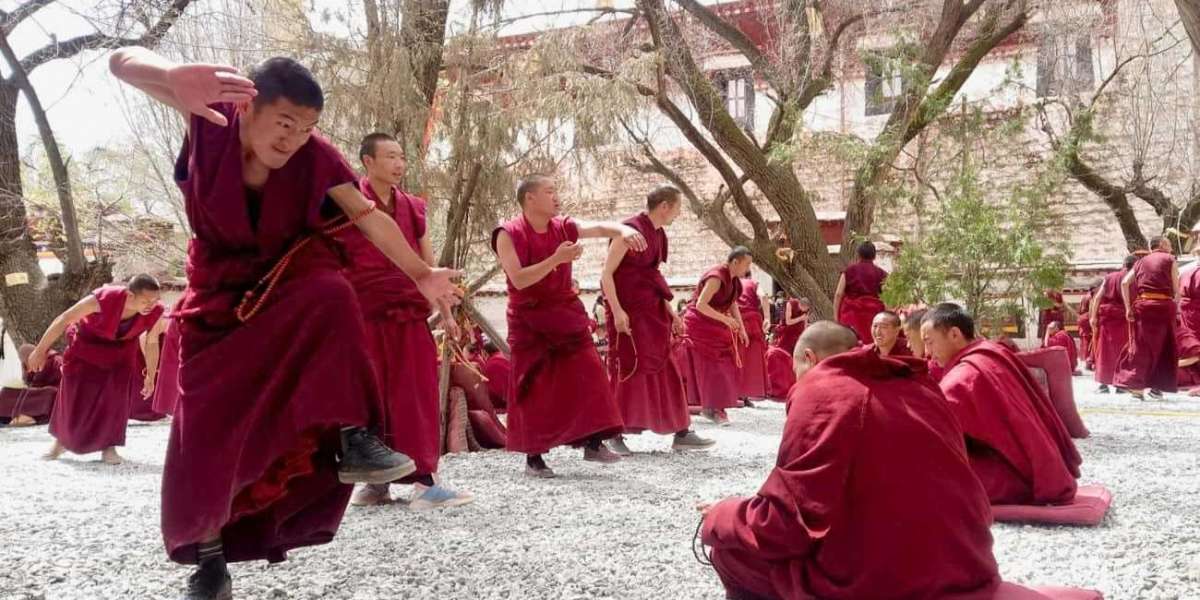Traveling to Tibet is a journey into a land of mystique, spirituality, and breathtaking natural beauty. Known as the "Roof of the World," Tibet offers a unique blend of ancient traditions, stunning landscapes, and rich cultural heritage. Whether you are a seasoned traveler or a first-time visitor, making the most of your Tibetan travel experience requires careful planning, an open mind, and respect for the local customs and environment. In this guide, we will explore how you can enhance your journey to Tibet, focusing on the essential aspects of travel to Tibet, including Lhasa, the spiritual heart of the region.
Understanding the Spiritual Significance of Tibet
Embrace the Cultural and Religious Heritage
Tibet is not just a destination; it is a living museum of Buddhist culture and spirituality. The Tibetan people’s deep religious devotion is evident in their daily lives, and as a traveler, embracing this aspect of Tibetan culture is crucial to fully appreciating your experience. Begin your journey by learning about Tibetan Buddhism and its practices. Visiting monasteries, such as the iconic Potala Palace in Lhasa, Jokhang Temple, and Sera Monastery, will give you a deeper understanding of the spiritual significance of these places.
Respect is paramount when visiting religious sites. Dress modestly, remove your hat when entering temples, and always walk clockwise around religious monuments and prayer wheels. Engaging with local monks and participating in meditation sessions or prayer rituals can also provide a profound connection to Tibetan spirituality.
Visit Lhasa: The Heart of Tibetan Buddhism
No Tibet travel experience is complete without spending time in Lhasa, the spiritual and administrative capital of Tibet. Lhasa, often referred to as the "Place of the Gods," is home to some of the most important religious sites in Tibetan Buddhism. The Potala Palace, once the winter residence of the Dalai Lamas, is a UNESCO World Heritage Site and a symbol of Tibetan Buddhism. The Jokhang Temple, located in the heart of Lhasa, is another must-visit site. This temple is considered the most sacred in Tibet, and pilgrims from all over the region journey here to pay their respects.
While in Lhasa, take the time to explore the Barkhor Street, a bustling market area surrounding the Jokhang Temple. Here, you can observe pilgrims making their kora (circumambulation) around the temple, spinning prayer wheels, and chanting mantras. The vibrant atmosphere of Barkhor Street provides a unique insight into the daily life and religious devotion of the Tibetan people.
Planning Your Journey to Tibet
Choose the Best Time to Visit
Tibet’s high altitude and unique climate make it important to choose the right time for your visit. The best time to travel to Tibet is from April to October, with May to September being the peak tourist season. During this period, the weather is relatively mild, and most areas, including Lhasa, are accessible. July and August are the warmest months, making them ideal for exploring Tibet’s outdoor attractions, such as Namtso Lake and Mount Everest Base Camp.
However, if you prefer a quieter experience, consider visiting in the shoulder seasons of April-May or September-October. The weather is still favorable, and you’ll encounter fewer tourists, allowing for a more intimate exploration of Tibet’s sacred sites.
Acclimatize to the High Altitude
One of the biggest challenges of traveling to Tibet is adjusting to the high altitude. Lhasa sits at an altitude of 3,650 meters (11,975 feet), and many other destinations in Tibet are even higher. Altitude sickness can affect anyone, regardless of age or fitness level, so proper acclimatization is essential.
To minimize the risk of altitude sickness, plan to spend your first few days in Lhasa, allowing your body to adjust before venturing to higher altitudes. Drink plenty of water, avoid strenuous activities, and refrain from alcohol and tobacco during the acclimatization period. If needed, consult your doctor about medications that can help prevent altitude sickness.
Exploring Tibet's Natural Wonders
Discover the Majesty of Mount Everest
For many travelers, the highlight of their Tibet travel experience is the opportunity to see Mount Everest, the world’s highest peak. The North Base Camp, located in Tibet, offers a unique vantage point to view this awe-inspiring mountain. The journey to Everest Base Camp is an adventure in itself, taking you through rugged landscapes, remote villages, and high mountain passes.
While the trek to Everest Base Camp requires careful planning and physical preparation, the reward is the breathtaking view of Mount Everest and the surrounding peaks. For those who prefer a less strenuous option, the base camp can also be reached by vehicle, allowing you to witness the majesty of Everest without the need for extensive trekking.
Experience the Serenity of Namtso Lake
Namtso Lake, one of the highest saltwater lakes in the world, is another natural wonder that should not be missed during your Tibet travel. Located at an altitude of 4,718 meters (15,479 feet), Namtso is known for its crystal-clear blue waters, dramatic mountain backdrop, and serene atmosphere. The lake is considered sacred by Tibetans, and many pilgrims come here to walk around its shores as a form of meditation.
A visit to Namtso Lake offers a peaceful retreat from the hustle and bustle of Lhasa. You can spend time hiking around the lake, visiting nearby monasteries, or simply soaking in the tranquility of the surroundings. Camping near the lake is also a popular option for those who want to fully immerse themselves in the natural beauty of this remote location.
Engaging with Tibetan Culture and People
Participate in Tibetan Festivals
Tibetan festivals are vibrant expressions of the region’s rich cultural heritage. If your travel dates coincide with a local festival, don’t miss the opportunity to participate. Losar, the Tibetan New Year, is the most important festival in Tibet and is celebrated with traditional dances, music, and religious ceremonies. Saga Dawa, another significant festival, commemorates the birth, enlightenment, and death of Buddha and is marked by a month of prayer and pilgrimage.
Attending a Tibetan festival provides a unique chance to witness the local customs, interact with the Tibetan people, and experience the joyful and spiritual atmosphere that permeates these events. Whether it’s watching traditional cham dances, joining in a communal feast, or participating in prayer ceremonies, Tibetan festivals offer an unforgettable cultural experience.
Learn About Tibetan Crafts and Arts
Tibetan craftsmanship is renowned for its intricate designs and symbolic meanings. During your travels in Tibet, take the time to explore local markets and workshops where artisans create traditional Tibetan crafts such as thangka paintings, hand-woven rugs, and religious statues. These crafts are not only beautiful souvenirs but also carry deep spiritual significance.
Visiting workshops and interacting with artisans can give you a deeper appreciation for the skill and dedication involved in Tibetan crafts. Many artisans are happy to share the stories behind their work, explaining the symbolism and techniques passed down through generations. Purchasing locally-made crafts also supports the preservation of Tibetan cultural heritage and provides a meaningful memento of your journey.
Practical Tips for Traveling in Tibet
Obtain the Necessary Permits
Traveling to Tibet requires special permits in addition to a Chinese visa. The Tibet Travel Permit is mandatory for all foreign travelers and must be obtained before entering the region. If you plan to visit areas outside of Lhasa, such as Mount Everest Base Camp or Namtso Lake, additional permits, such as the Alien Travel Permit, may be required.
These permits can only be obtained through a registered travel agency in Tibet, so it’s important to arrange yourtour to tibet rmits well in advance of your travel dates. Working with a reputable travel agency can also ensure that your journey is smooth and hassle-free, as they will handle all the necessary paperwork and logistics.
Respect Local Customs and Etiquette
Tibetan culture is deeply rooted in tradition, and respecting local customs is essential for a positive travel experience. When interacting with Tibetan people, always show respect for their beliefs and way of life. For example, when visiting monasteries, avoid touching religious objects and do not photograph monks or prayer sessions without permission.
When offered food or drink by locals, it’s polite to accept, even if just a small amount, as a gesture of respect. Additionally, be mindful of your actions when taking photographs. Always ask for permission before photographing people, and avoid taking photos in sensitive areas such as inside temples or during religious ceremonies.
Support Responsible and Sustainable Tourism
As Tibet’s popularity as a travel destination grows, so does the importance of practicing responsible tourism. The fragile environment and unique culture of tibet lhasa tour travelers take care to minimize their impact. Choose eco-friendly accommodations, reduce plastic waste, and follow the “Leave No Trace” principles when exploring natural areas.
Supporting local businesses, such as staying in locally-owned guesthouses, eating at Tibetan restaurants, and purchasing handicrafts directly from artisans, helps sustain the local economy and ensures that your travel benefits the Tibetan community.
Conclusion
A journey to Tibet is more than just a trip; it’s an opportunity to connect with a culture that has preserved its traditions and spirituality for centuries. By understanding the spiritual significance of the region, planning your journey carefully, and respecting the local customs, you can make the most of your Tibet travel experience. Whether you are marveling at the Potala Palace in Lhasa, gazing upon Mount Everest, or participating in a Tibetan festival, your time in Tibet will be filled with unforgettable moments that will leave a lasting impression on your heart and soul









